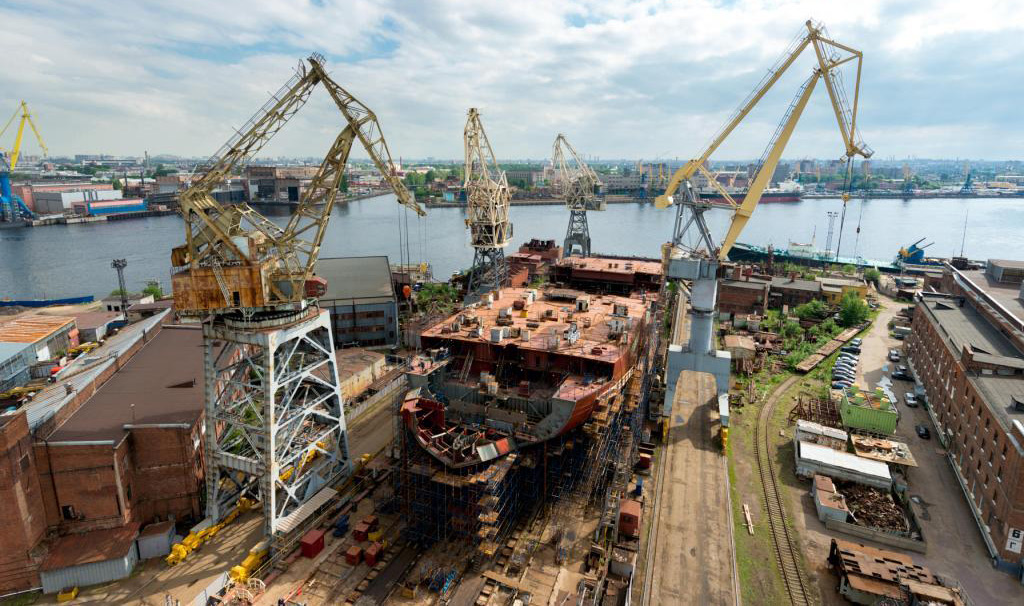
Arktika to be put afloat
back to contentsThe event is timed to coincide with the 160th anniversary of the Baltic Plant building the icebreaker for Rosatom’s subsidiary Atomflot. When afloat, the vessel will be berthed to complete the construction and be prepared for tests. The Baltic Plant expects that the icebreaker will be transferred to the customer (Atomflot) in December next year.
Arktika, the flagship vessel, was laid down in November 2013. Sibir (Siberia), the next ship in the series, was laid down in May 2015 to be followed by the third icebreaker of the same design (Ural) in September 2016. According to the 84.4 billion ruble contract, Sibir and Ural are to be commissioned in late 2019 and 2020.
The latest Russian nuclear-powered ships will be able to break through three meter thick ice and convoy 100,000 DWT ships. The icebreakers will assist oil tankers and gas carriers in transporting hydrocarbons from the Yamal and Gydan Peninsulas and Kara Sea offshore deposits to the Atlantic and Pacific markets.
Nuclear-powered ships of the new design will be larger and more powerful than their predecessors. The new design allows for the operation both in the Arctic deep waters and estuaries of polar rivers. With a capacity of 60 MW, the icebreakers of LK-60 series will be equipped with two nuclear reactors. The key source of steam on board the ship is a new-generation 175 MW propulsion unit RITM-200 designed specifically for these icebreakers by OKBM Afrikantov (a subsidiary of Atomenergomash, Rosatom’s nuclear engineering division). The unit will be installed on Arktika in 2016.
The Arktika construction is monitored by Atomflot’s local division headquartered right at the Baltic Plant in Saint Petersburg. Its task is to audit technical documents prepared by the project’s general designer (Aisberg Design Bureau), accept each project phase and audit the contractor’s reports on completed phases of the project. “Compliance with the time schedule is monitored on a weekly basis. When there is a delay, we request the plant to provide an explanation and a list of corrective measures,” says Konstantin Knyazevsky, Atomflot Deputy CEO for Construction. Project costs are also monitored Atomflot experts.




